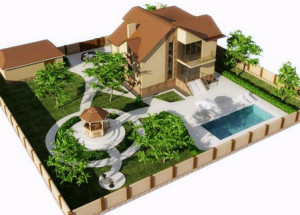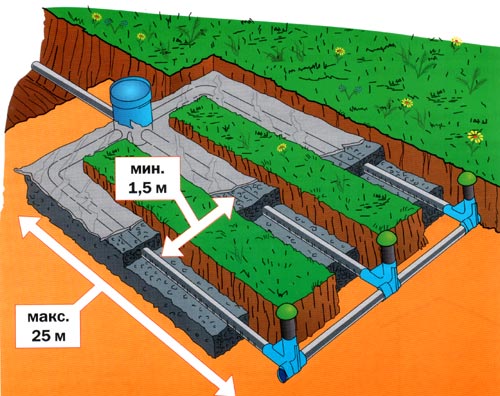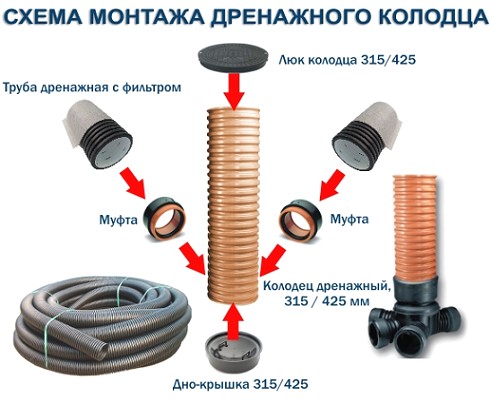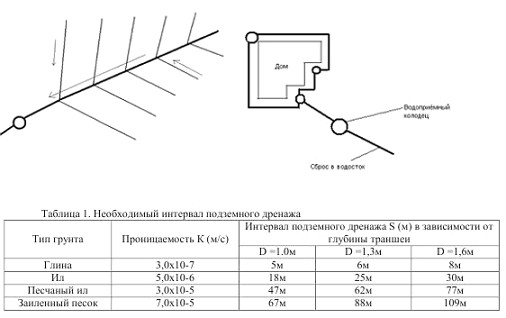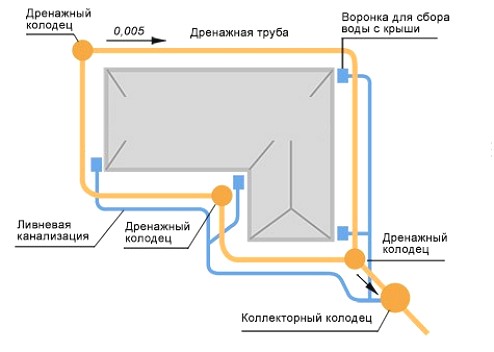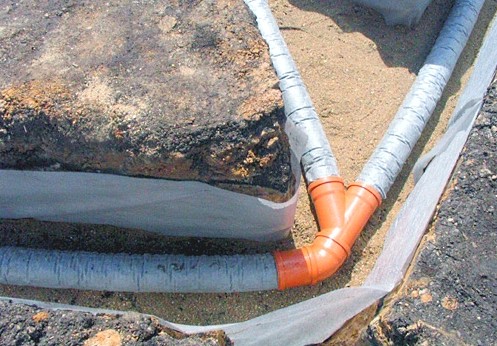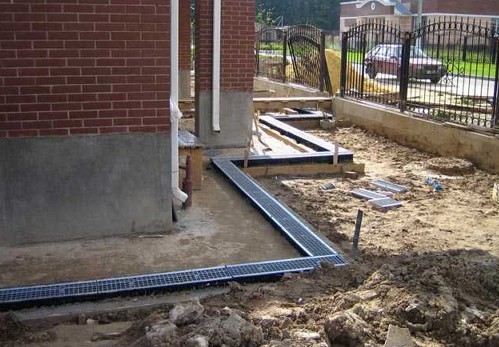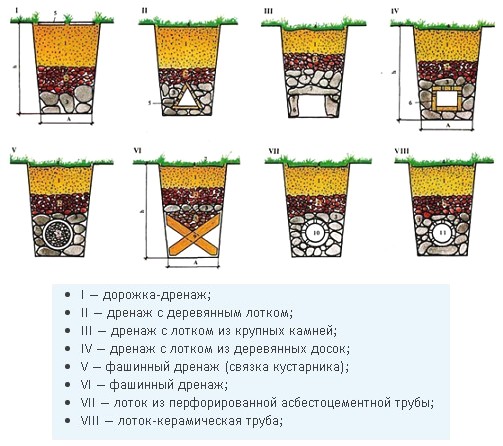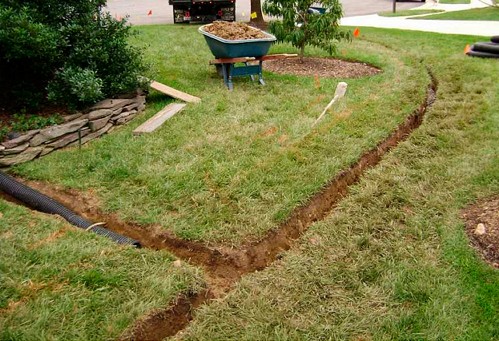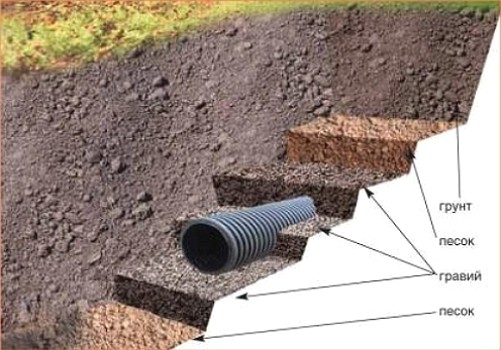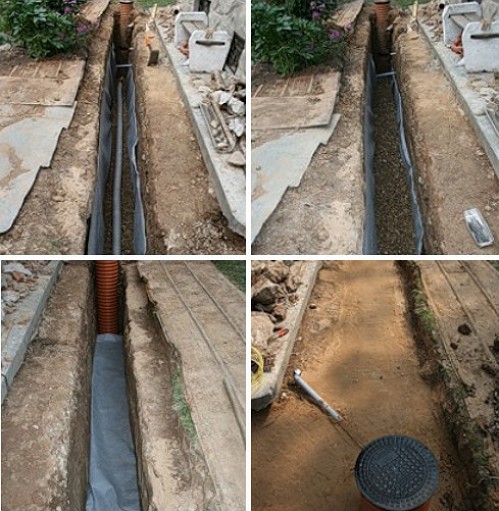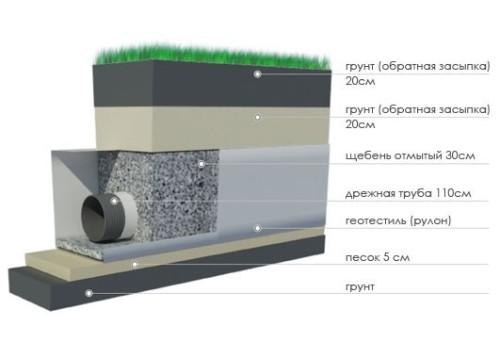The combat baptism of any Developer is the creation of a self-contained drainage system. The first, properly dug trench and the drainage pipe laid in it, will provide drainage from the site of the private house and give confidence in their own forces. Make a drain on the house plot? Easy!
Content
If you intend to drain
An important measure aimed at the implementation of drainage of land and drainage of groundwater is drainage. A set of measures to remove water or reduce its level is recommended to be carried out in accordance with the rules.
According to the recommendations of SNiP 2.06. 15-85 "Engineering protection of the territory from flooding and flooding" the creation of a drainage system of the site is necessary for lands with a high moisture content and abundant rainfall, leading to soaking.
Recall that the drainage device includes the following steps:
- project
- calculation and scheme
- choice of type of drainage system.
we design a drainage system
At the design stage of the drainage system, it is necessary to collect as much information as possible about the soil composition and the level of occurrence of groundwater. An important factor is the terrain and location of the site. The collected information will help to correctly draw up a drainage scheme and calculate the debits of water intake and discharge it into water receivers.
In aggregate, such information will allow us to make the right choice of drainage equipment and the necessary work on the diversion of water. In accordance with the design determine the location of drains and inclines, the depth of occurrence when channeling. In addition, this information will allow you to select the components.
calculate the debit of groundwater
Calculation of the inflow (debit) of groundwater for the system is made by the formula in which it is necessary to use the area of the water surface of the site and the water permeability of the soil (m3 / year) from 1 sq. Km. m area. The calculation of the runoff is carried out according to a technique that ensures that the specified level of wastewater is not exceeded.
In addition, when calculating, it is necessary to take into account the coefficients of water inflow from melting snow in the spring period.
The obtained design data will allow to choose the sizes of drainage elements and its design.
Drainage system components
The process of calculating the drainage forms the place for laying the components of the entire drainage system. Recall that the components of the system are: a water drainage network (drains) and drainage wells (water receivers).
The drainage network is a slightly ramified network of perforated pipes.
Drainage wells (water receivers) is a place for collecting water flowing through the drainage system. Through the drainage wells, which are a place for the collection of sand particles, the system is serviced.
The way of organization of the drainage device on the site is identical, as, indeed, the layout of the gasket.
Activities are carried out on the same principle, including:
- simple excavation of soil during trench formation and backfilling with sand and gravel, the benefit that the supply of sand and gravel across Russia, like supplies in St. Petersburg, it is not difficult
- installation of drainage pipes and trays - these components of the drainage system are also available to the consumer
- the laying of geotextiles and drainage mats - quite affordable building materials.
Drainage of a site by pipes
For the organization of drainage by pipes it is necessary to own such information:
- vertical planning of the site
- level of groundwater based on the results of hydrogeological surveys
- type of soil in accordance with the norms for "Classification of soil types."
On the basis of these data, depending on the degree of moistening or water saturation of the soil, as well as the features of the relief of the section, the diameter of the drainage pipe and the depth of installation are determined.
In the organization of drainage of the site, special perforated pipes made of composite or polymeric materials are used. Filtering capabilities of pipes allow water to pass through and prevent small particles of soil from entering the interior. The drainage pipes are wrapped with a filter casing of geotextile.
In order to ensure the efficient operation of the system, it is necessary to correctly select the diameter of the pipes, their location, incline, make a sprinkle and create a drainage layer. The distance between the pipes, their diameter is determined depending on the amount (volume) of water withdrawn per unit time. The most demanded pipes are pipes 50 and 100 mm in diameter.
Drainage network
To create a drainage network (drains), it is necessary to dig trenches. The width of the classical trench along the bottom should correspond to the outer diameter of the pipeline and an additional 40 cm. The cross section of the trench can be rectangular or trapezoidal. The bottom of the prepared trench can not contain large solid particles capable of disturbing the integrity of the laid pipe.
To ensure operational properties, drainage pipes are recommended to be placed on the non-freezing depth, namely 80-100 cm. The sequence of bedding of drainage layers must be observed: the sand-crushed pillow on the bottom of the drain is a filter-shock absorber, which provides the necessary bias of the system.
To carry out maintenance of the drainage system on the linear sections of the network with an interval of 50 m, the inspection wells are arranged. Wells are recommended to be arranged in places of turns and intersections or changes in the inclination angles of drains.
The level of occurrence of water in the site assumes a certain drainage system.
What types of drainage systems exist
Common types of drainage systems are: open drainage and deep.
open (surface) drainage
The cheapest option for drainage measures is the open drainage of the site, which involves digging ditches to drain water into the water basin (well or water body).
Surface or storm drainage is preferred for areas with clay soil. Drainage of the clay site involves the creation of linear drainage and point charges.
The scheme of open drainage involves digging a ditch running directly from the slope. In addition, at the base of the plot another ditch is laid, which is located parallel to the main road. This section of the lower ditch discharges water into the water intake. The depth of ditches and trenches is 1 m. As a drainage drain pipes are used.
deep drainage
Drainage deep involves the laying of pipes along the perimeter of the foundation of the house or structure. Moreover, the level of occurrence and location of pipes is recommended to be located below the level of the foundation under the slope. In most cases, the lack of a natural bias in the sector is solved by the arrangement of wells.
Drainage of deep type is a horizontal type of drainage measures. Measures for deep drainage should preferably be carried out at a site located in low-lying areas, on clayey and loamy soils, suggesting the laying of tracks and paths.
The technology of conducting deep drainage involves the laying of drainage (perforated) pipes in special trenches. The drainage network is laid to the collector pipe of considerable diameter. If the area of the dehumidification site is large, several wells can be used to discharge water.
Recommendations for conducting drainage on the site with their own hands are suggested in this video.


